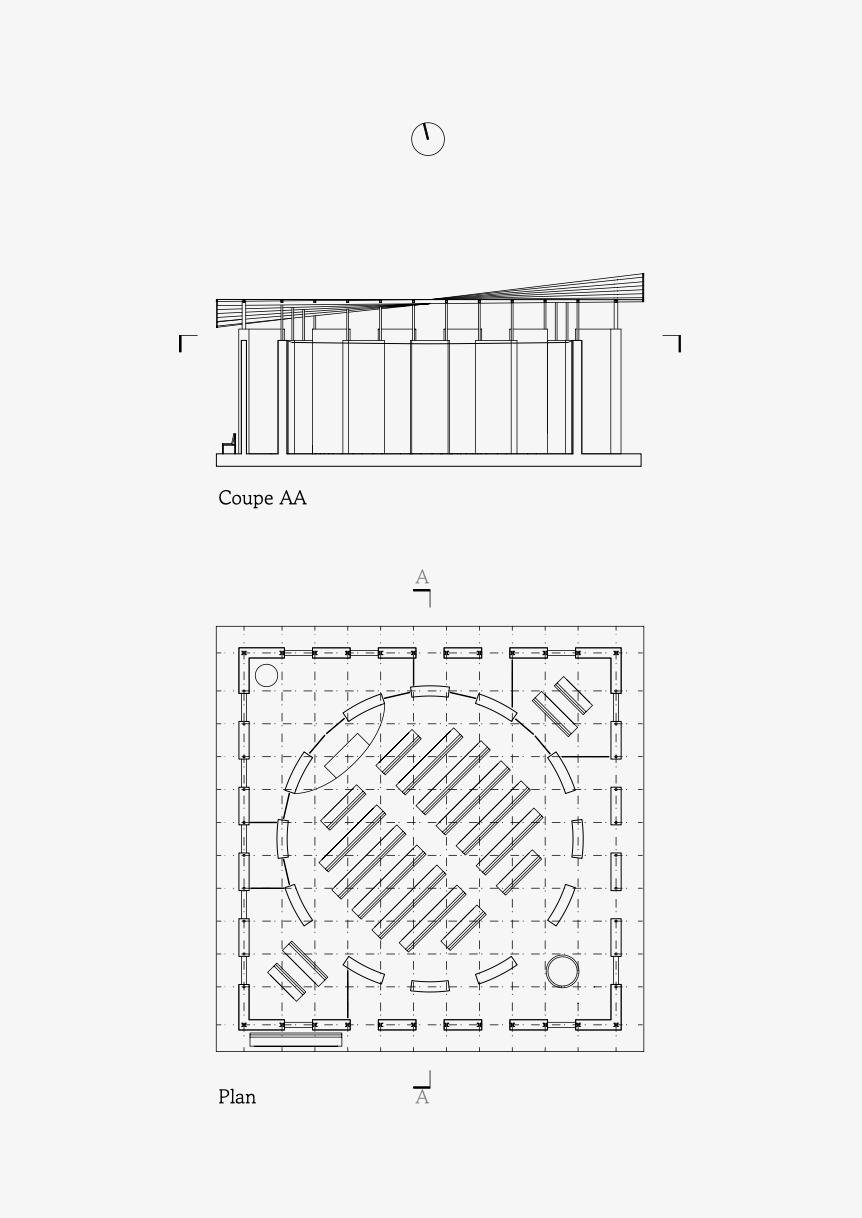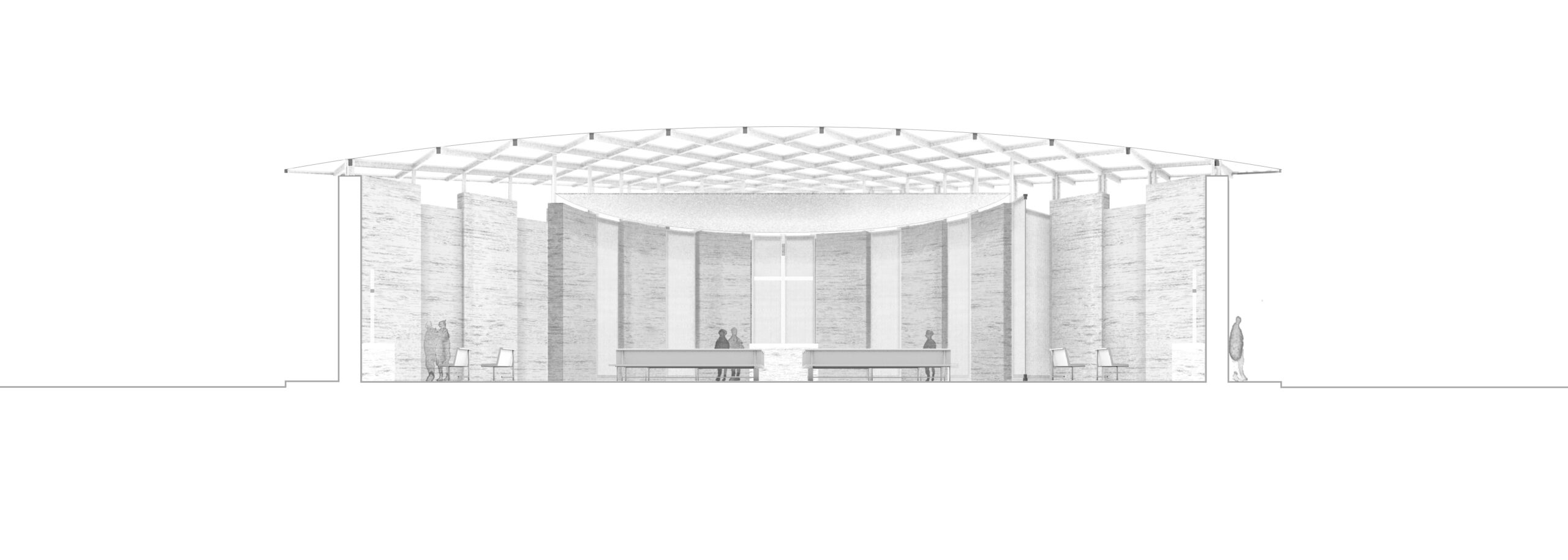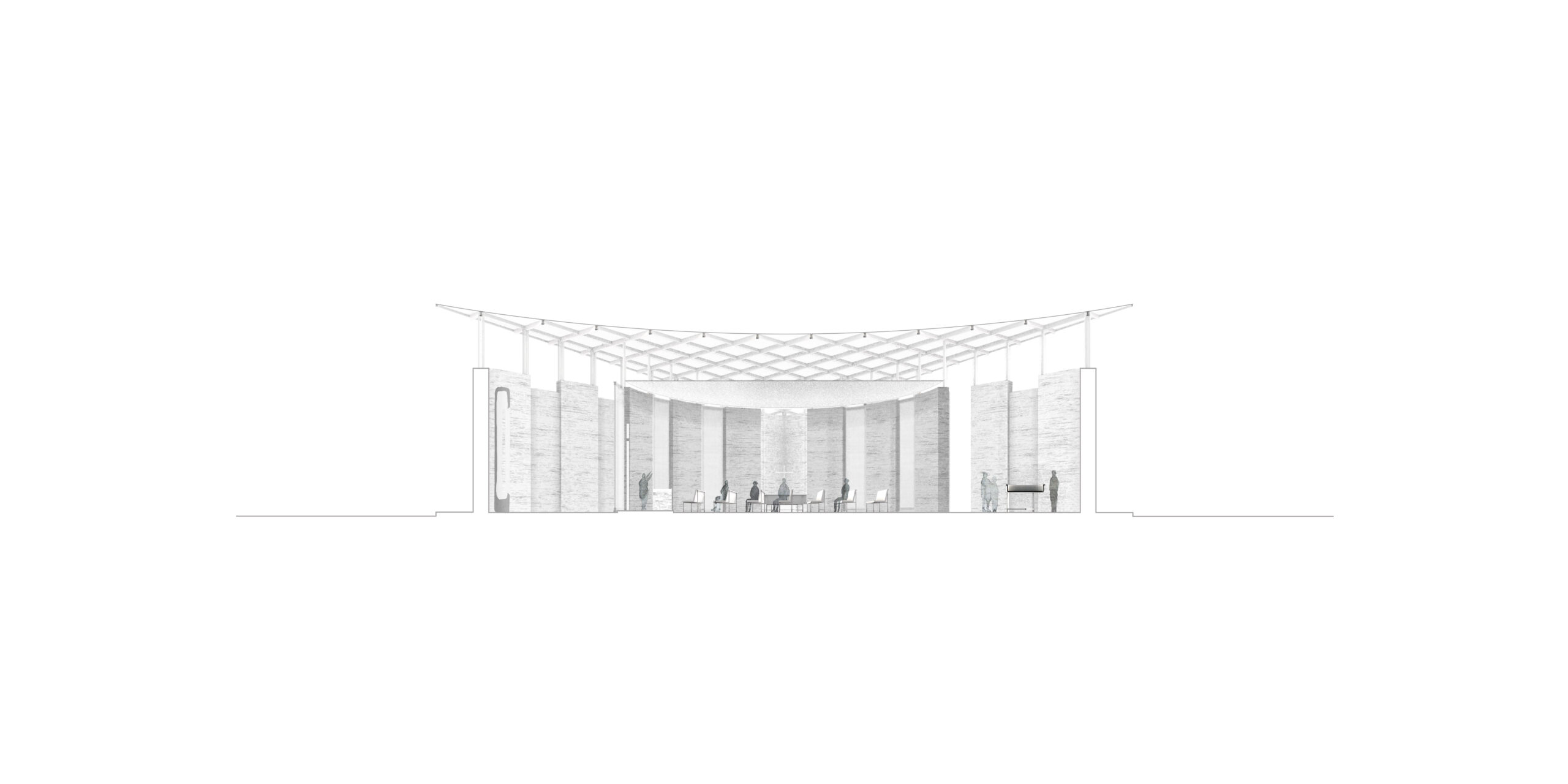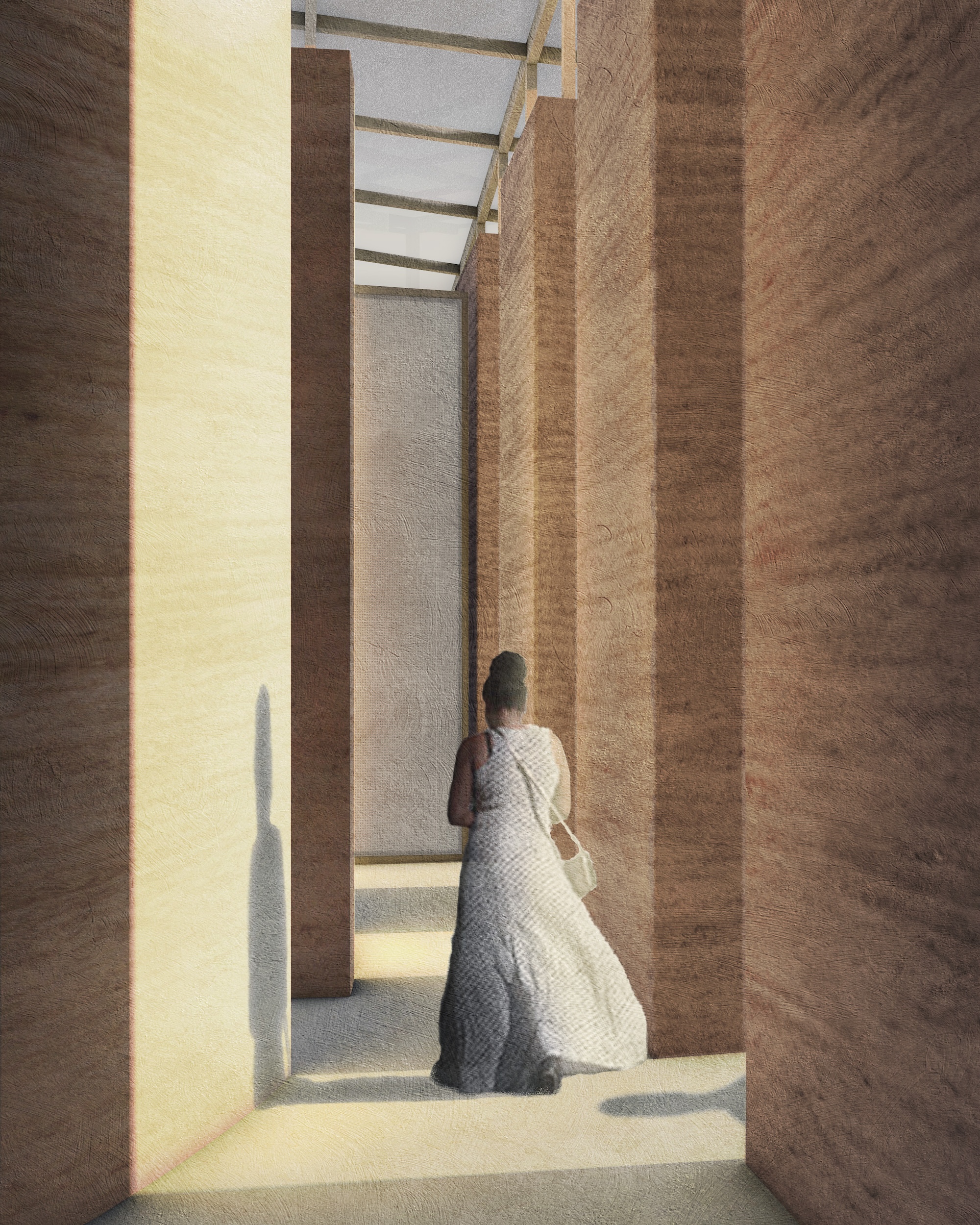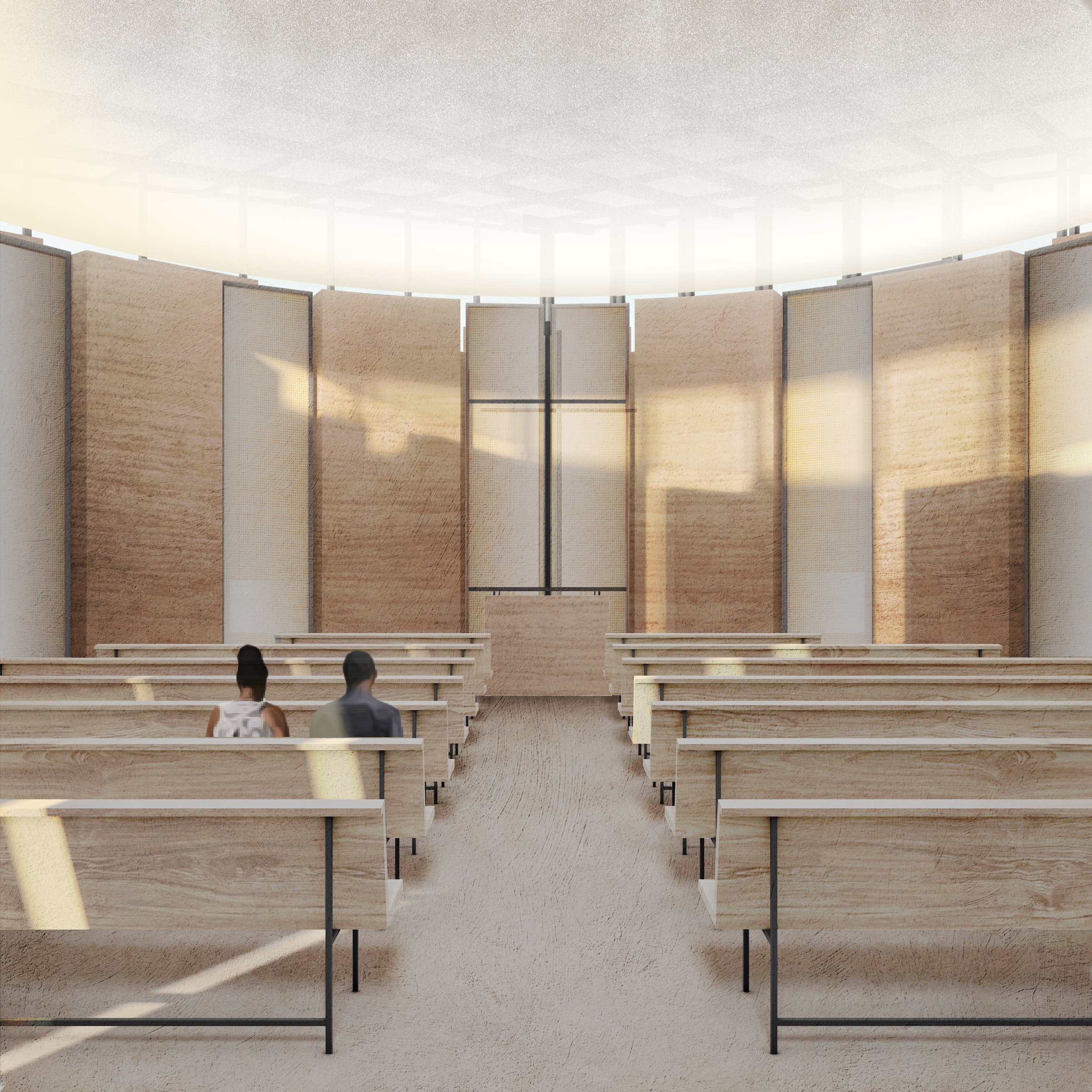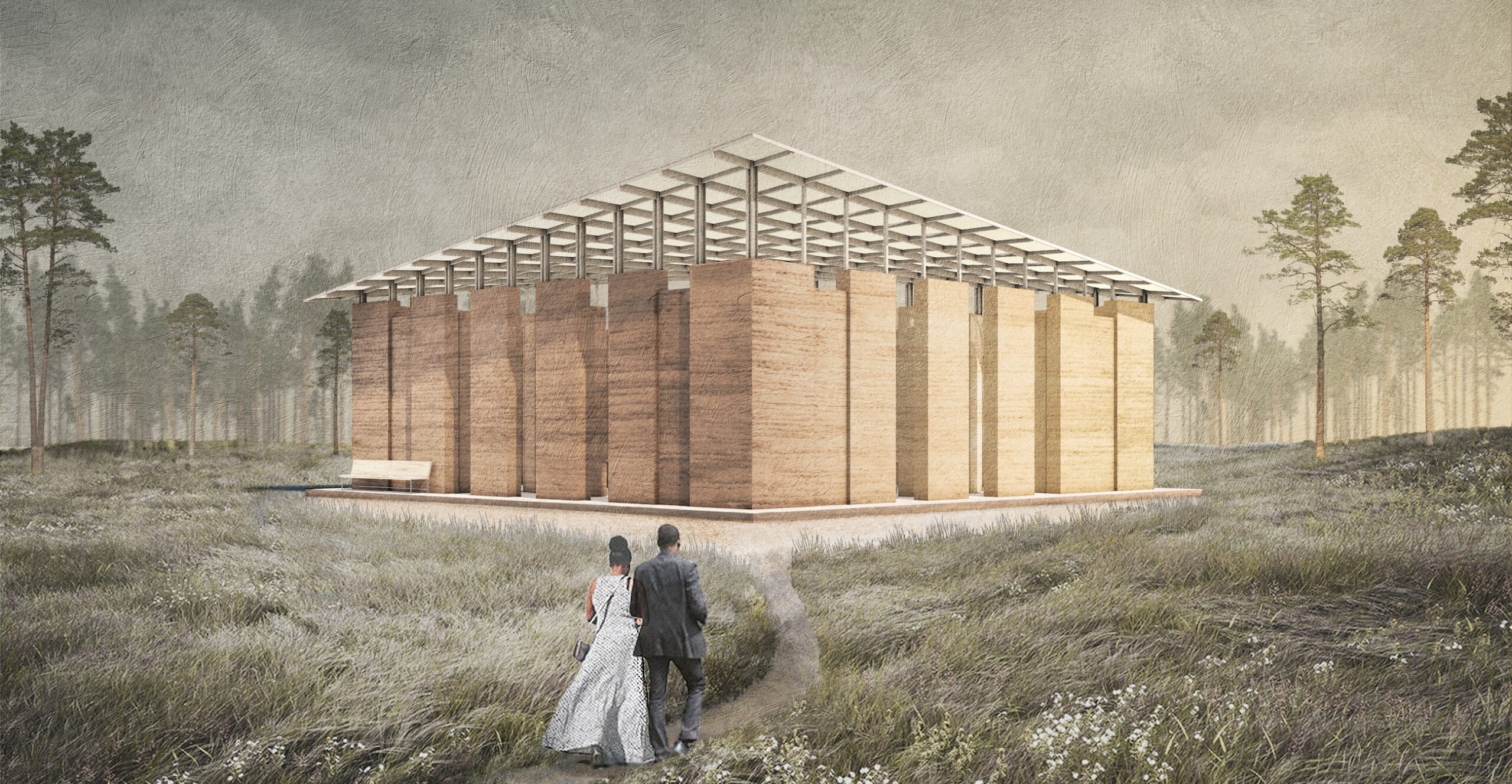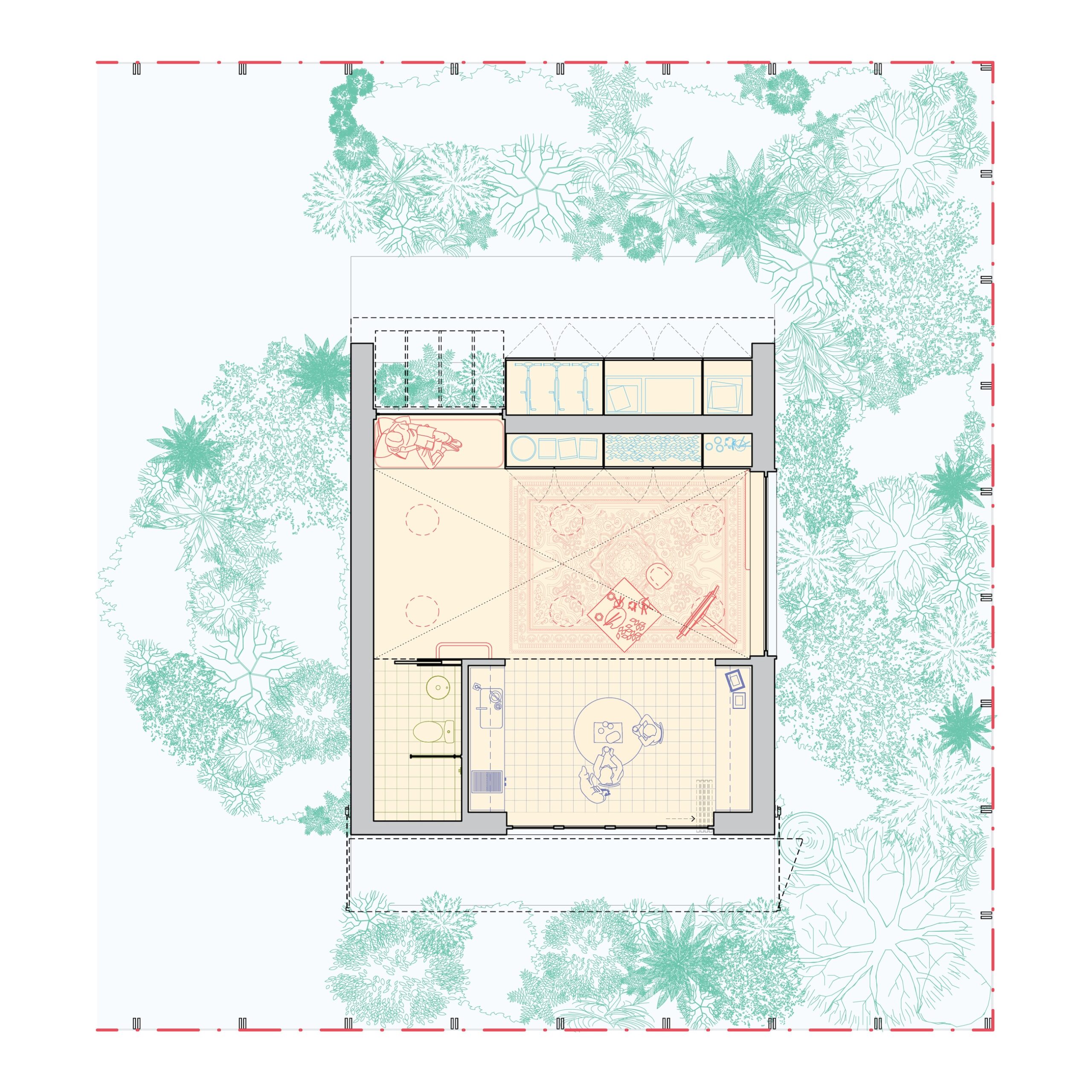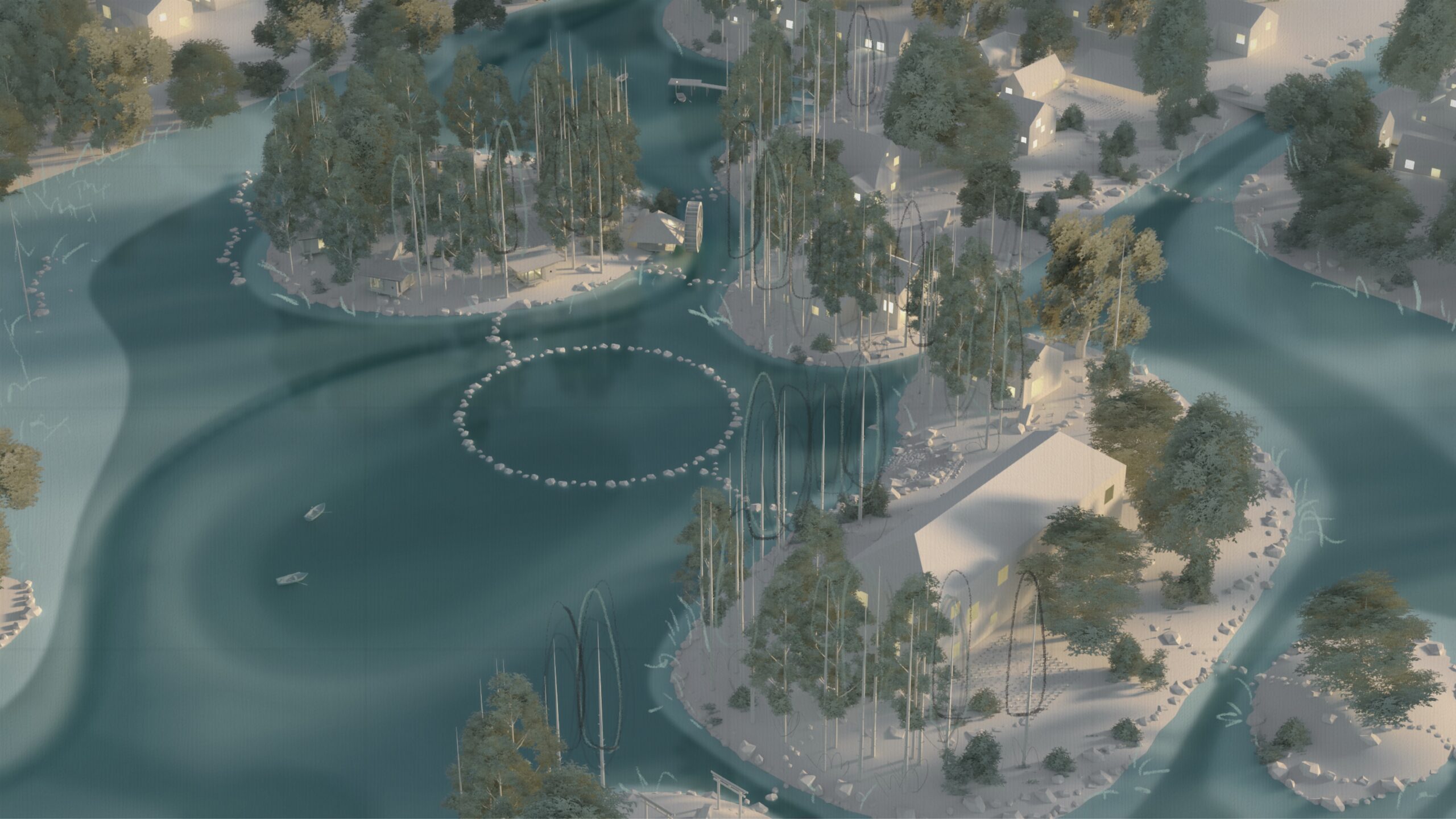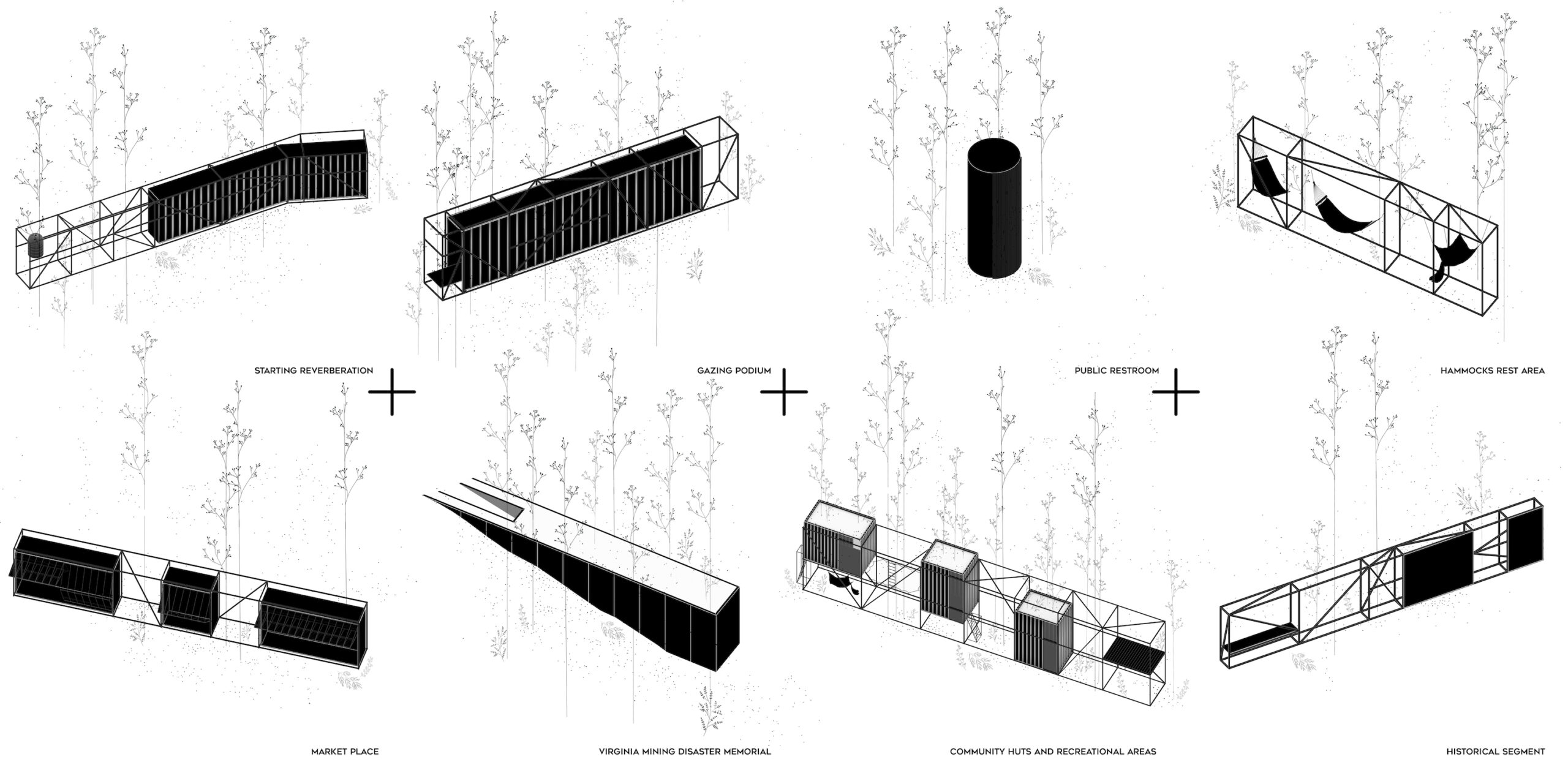RUKOMO CHURCH_Rwanda
Keeping legacy and knowledge by oral transmission is an ancestral practice for the Rwandese population.
The reality is transforming through the prism of the beholder, and the memory risks to fall into oblivion. This practice provides a fragile balance between eternity and ephemerality, reality and imaginary.
By making this place invisible, the upstream location of the church from the village of Rukomo perpetuates this tradition. Each passenger is encouraged to give free rein to his imagination around this place that we described. This imaginary invites its visitor to a journey, to a place that would be discovered at the end of an ascent. Thereby, the passenger provides a unique narration of his experience once he returns down to the village.
The image of the Rukomo church becomes unique to each individual that stumbles there and multiple for the experiences that it provides even before being revealed.
Keeping legacy and knowledge by oral transmission is an ancestral practice for the Rwandese population. The reality is transforming through the prism of the beholder, and the memory risks to fall into oblivion. This practice provides a fragile balance between eternity and ephemerality, reality and imaginary.
By making this place invisible, the upstream location of the church from the village of Rukomo perpetuates this tradition. Each passenger is encouraged to give free rein to his imagination around this place that we described. This imaginary invites its visitor to a journey to a place that would be discovered at the end of an ascent. Thereby, the passenger provides a unique narration of his experience once he returns down to the village. The image of the Rukomo church becomes unique to each individual that stumbles there and multiple for the experiences that it provides even before being revealed.
“…you are dust and to dust you shall return…” is a biblical quote belonging to all earthly entities. This sentence reminds us of the basis of our world, the ambivalence between creation and destruction.The church of Rukomo belongs to this world and is not an exception to the rule. Built from the surrounding soil and protected by a thin and light membrane, the church expresses its fragility through the symbiosis between these two elements: depending on each other in order to exist. Otherwise the natural destruction over
time would be slow but inevitable.
A church — without bells — that rings the call to prayer. The church of Rukomo reinterprets the traditional bell tower with an imposing drum. Its aim is to revive the Rwandese music heritage by entering in resonance with the sound of the instrument. Placed in the sacristy, aligned with the hall and the altar, the slit drum becomes a sacred object that marks the beginning of a gathering. A deep sound guides the passenger through different spaces and their respective rituals: the hall associated with the water and its vast clam, and the altar with the light and its connection with the sky.
Beyond a worship place, the church is a place for quietude and peace, where the communities can reconcile their past through spirituality. This place is meant to be a protective shelter open to everyone. Porous in its evolution from profane towards Sacred, blurring the perception of its passengers while inviting them to pass together through: separation, introspective steps, reunion and communion.
The journey doesn’t stop at the doors of the church, instead it continues inside the building that eventually becomes its guide.
Involving the Rukomo inhabitants during the construction will allow them to strongly identify and appropriate the edifice within the community. Being aware of fragility of used materials, the population will maintain the church so it can stay preserved over time and keep reflecting their culture and heritage. However, if for some reason abandonment occurs; the weaker parts will gradually disappear and give way to a new contemplation site opened to natural elements.The place will gradually become a witness to a passed worship place, without a trace, doomed to disappear, faced to the whims of the time.


